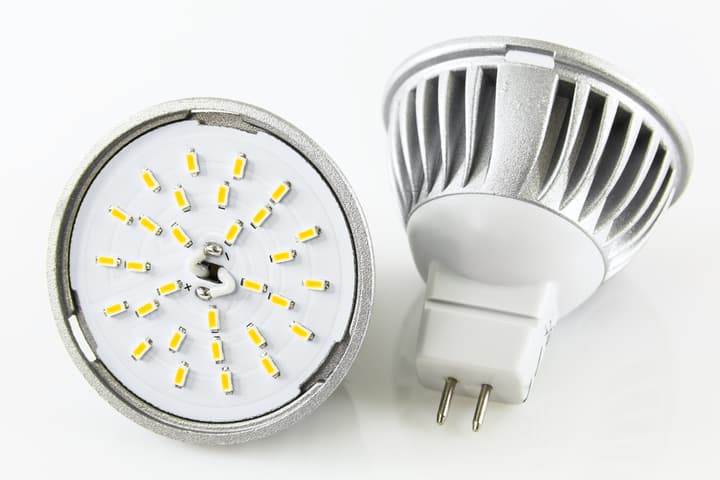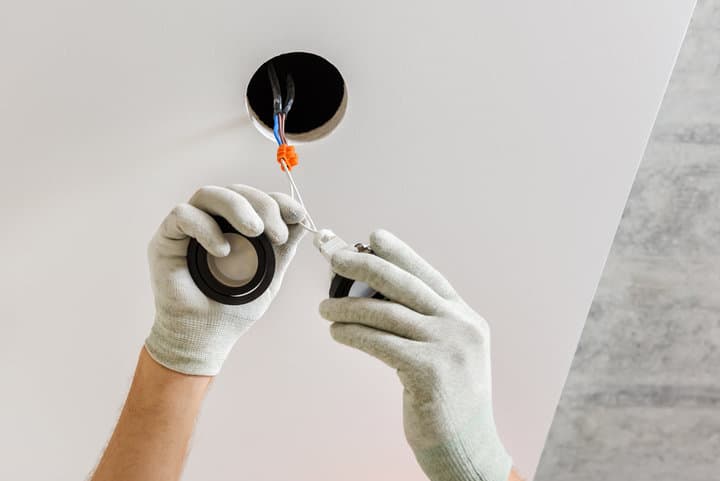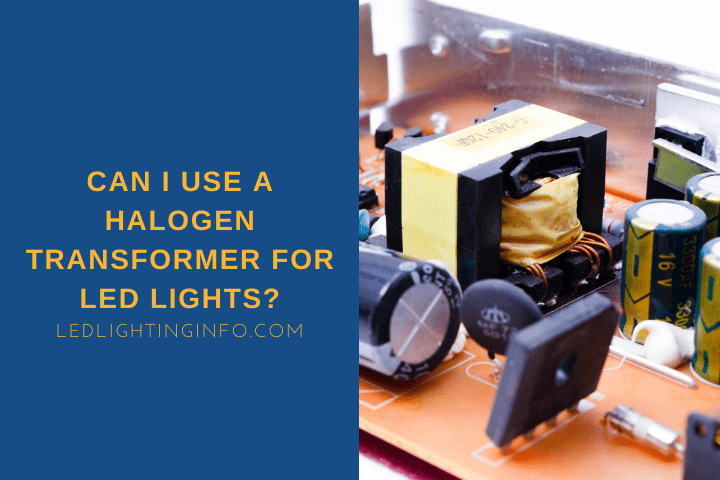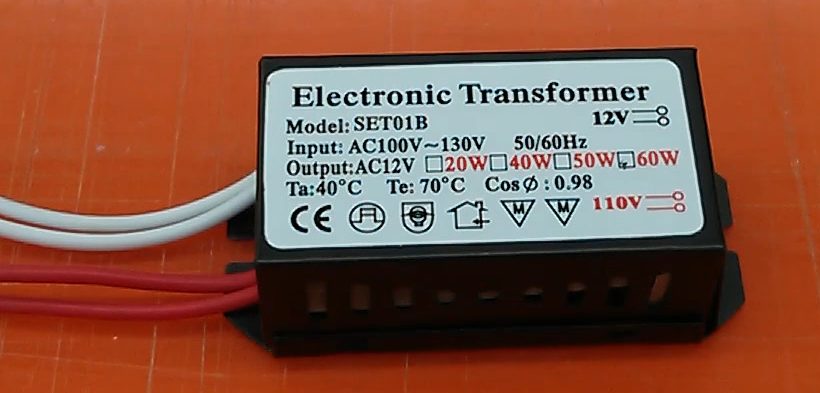Suppose you’re making the switch from halogen to LED bulbs. In that case, you’re looking at a future where you’ll lower your energy costs and have longer-lasting bulbs. So you’ve already made a wise decision!
However, it’s not always as easy as swapping one bulb out for another. Many halogen bulbs are designed to be low voltage, which means they have a transformer feeding them the current.
Most LED light bulbs don’t need a transformer, as they have their own built-in LED drivers. A halogen transformer can cause an LED light to malfunction. MR16 LEDs are the exception, but even they may not be compatible with halogen transformers. The best option is disconnecting and removing the transformer or replacing the fitting.
In this article, I’m going to go into more detail on this, including:
- The difference between transformers and LED drivers
- Which LED lights need a transformer
- Why downlights need a transformer
Halogen Transformer vs LED Driver: What’s The Difference?
The main difference between transformers for halogen lights and LED drivers is the output current – a transformer for halogen lights outputs current in AC, while an LED transformer outputs the DC current needed by an LED bulb. Also, transformers are external to the bulb, while drivers are typically internal.
Current Output
Halogen transformers and LED drivers do very similar jobs – they take the mains voltage and convert it to the lower voltage needed to power either low-voltage halogen bulbs or LED bulbs.
Mains voltage is 120 volts for US homes and up to 240 volts elsewhere in the world. But typically, most LEDs work on a lower 12 volt current, as do some halogen downlights.
So the current needs to be stepped down – otherwise, the bulbs would completely fry.
Yet halogen lights need AC current to work while most LEDs need DC – which is why there are two different electrical components for the different types of light.
Voltage Conversion Technology
Halogen bulbs use magnetic transformers, which rely on magnetic coils to lower the voltage. The wires are wrapped around a magnetic core, and the magnetic flux reduces the voltage.
LED drivers are electronic transformers that use an inverter instead. This is quite complex circuitry, although it can fit in a small space.
Location
The other key difference is the location – transformers for halogen lights are part of the fixture, whereas an LED driver is normally part of the bulb itself.
The only exceptions tend to be for an LED light strip, which would be external power supply fed, and for landscape lights which will instead use an LED transformer.
A quick note on terminology – LED drivers are sometimes referred to as LED transformers because they are essentially different versions of the same thing. If someone is talking about LED transformers, just know they usually mean an LED driver.
Can I Use 12V Halogen Transformer For LED Lights?
You generally can’t use a 12V halogen transformer for LED lights. The transformer used for halogen lights output AC current, while LED bulbs typically need DC current. In most cases where you’re swapping low-voltage halogen lights for LEDs, you’ll need to remove the transformer or replace the fixture.
There are exceptions, though…
Which LEDs Require A Transformer?

MR16 LED lights with a GU5.3 base used in downlights require transformer. They don’t use a driver, so the fixture needs to have a transformer in place instead.
Outdoor lights will also need an LED transformer, but those are special outdoor transformers, not related to halogen ones.
GU5.3 bulbs are a type of spotlight that, even if you choose LEDs, will still need a transformer.
If your light bulb isn’t a GU5.3 (two push-in pins) then it’s likely you don’t need the transformer at all. In fact, the transformer can cause your light not working correctly.
So MR16 LEDs with a different base, like GU10, don’t need the transformer.
Why Do LED Downlights Need A Transformer?

Because GU5.3 LED downlights are designed to be very small lights, they don’t have space for a driver inside the bulb casing.
They’re designed to fit existing fixtures using just two pins, while larger bulbs (such as the GU10) and screw type bulbs caps for other retrofit LED lights have space for a driver inside.
Installing LED downlights shouldn’t mean transforming the look of your home with much bigger lights. So to keep the bulbs small, an external transformer is still used. It still needs some form of transformer to step the current down to 12 volts.
Are MR16 LED Compatible With Halogen Transformer?

Transformers for halogen bulbs have a minimum and maximum wattage threshold for the bulb, and LEDs will often come in under that minimum. So in most cases, LEDs – even GU5.3 MR16s – need dedicated LED transformers.
Using incompatible transformers can cause various problems, from your bulbs flickering to overheating, which in turn is shortening their lifespan.
There are some halogen transformers that will have a minimum threshold that means LEDs would work, and they’ll advertise this on their packaging or the website where you buy them from.
If you already have a halogen transformer, you could check its minimum power threshold.
Look for a serial number and search for it online, if you can’t see the information on the transformer itself.
If your LED is higher than the minimum wattage, it should work.
Otherwise, you’ll need to replace the transformer with one compatible with LED bulbs.
Final Words
Transformers are probably the one tricky element of replacing bulbs in your home with LEDs. LED bulbs themselves don’t need special wiring, but the existing transformers for halogen bulbs can cause LEDs to misbehave.
However, the positives of doing so still outweigh this initial work – you’ll get bulbs that last a lot longer and draw much less power for the same brightness levels, saving you money.
Now, if you’ve other questions about the needs of an LED bulb – such as whether LEDs need a ballast – be sure to check out more of my guides.
Looking for an LED bulb but not sure what type you need?
Check out my free bulb picker and select the right bulb within few clicks.


